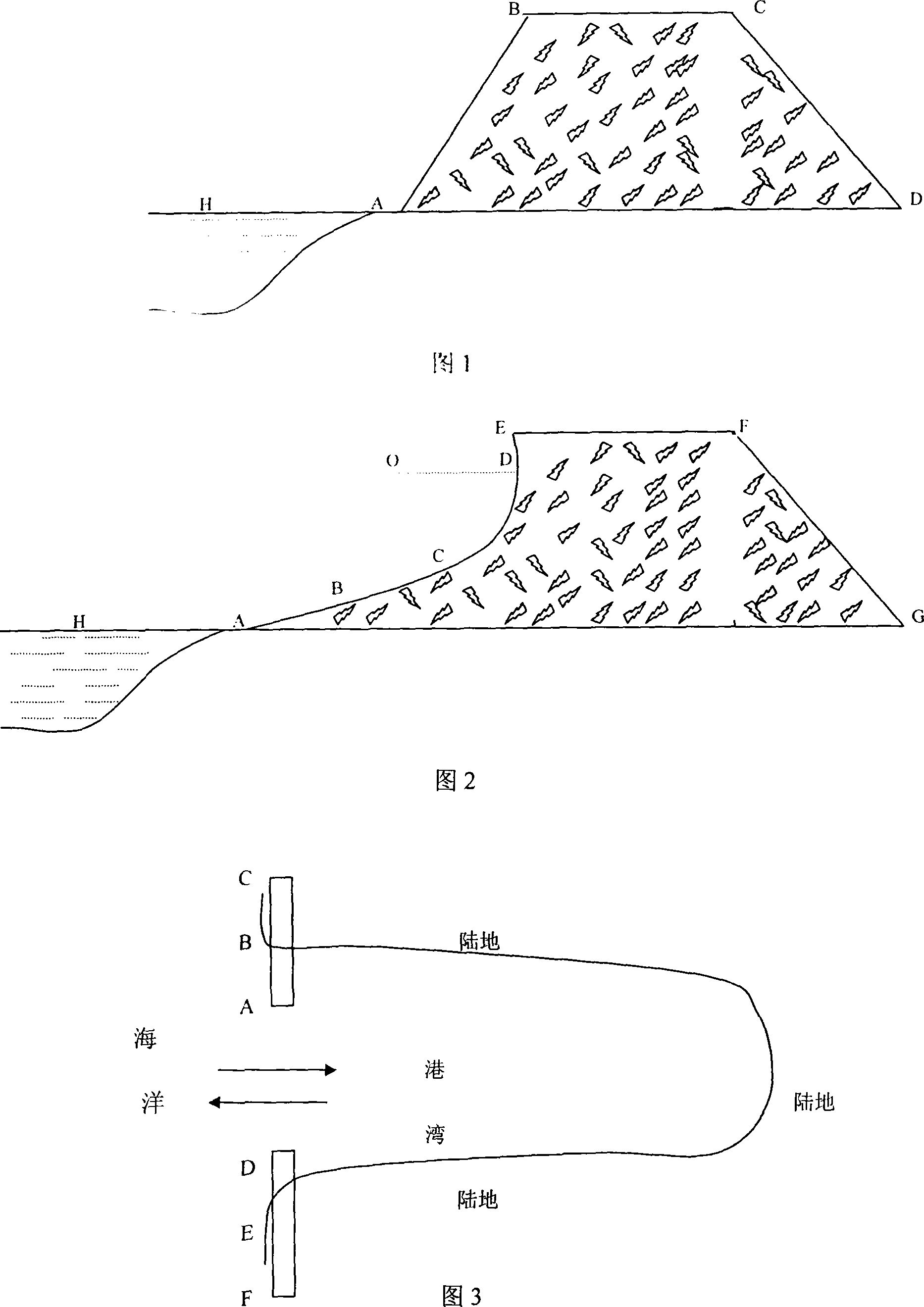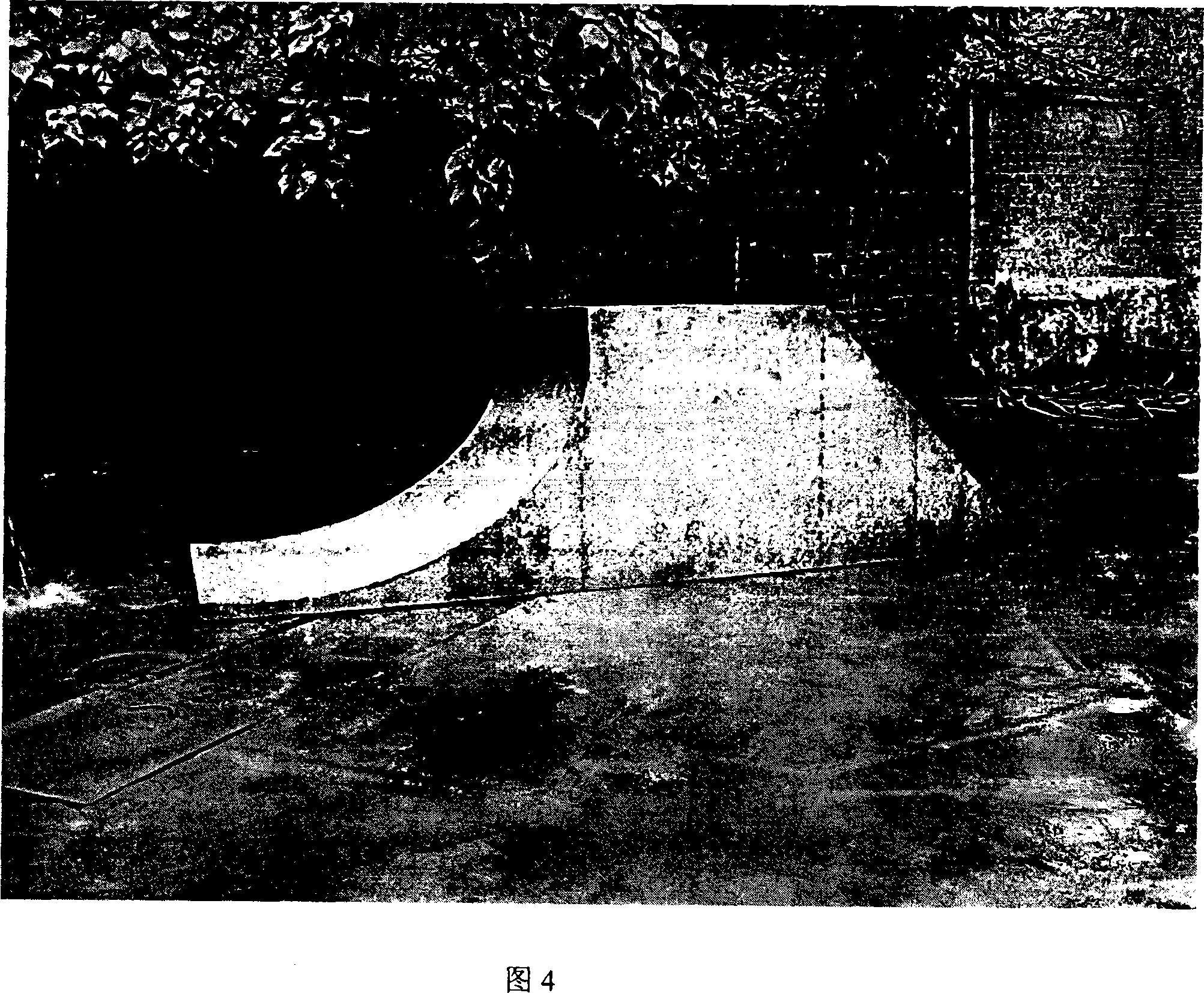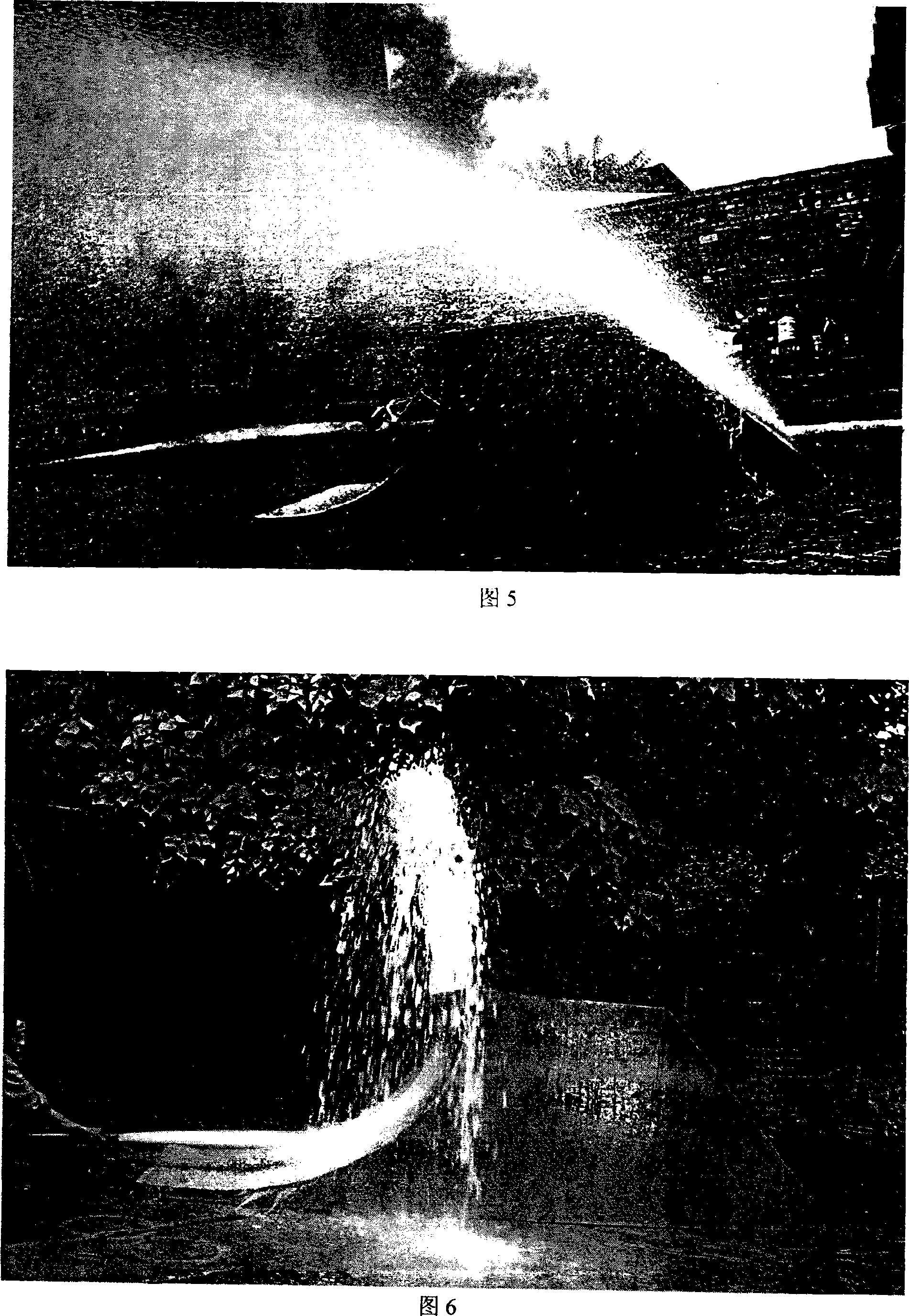Tsunami protection dike
A protection dike and tsunami technology, applied in the direction of breakwaters, coastline protection, dikes, etc., can solve problems such as difficult long-term maintenance, huge impact force of waves, and difficult construction of anti-tsunami walls, so as to achieve force balance and improve the ability to resist wave damage , Avoid the effect of sea water from destroying buildings
- Summary
- Abstract
- Description
- Claims
- Application Information
AI Technical Summary
Problems solved by technology
Method used
Image
Examples
Embodiment Construction
[0044] In order to compare the characteristic difference between the tsunami protection dike of the present invention and the common protection dike, a sectional view of the protection dike in the prior art along the cross section is drawn as shown in FIG. 1 . The cross-section of the breakwater shown in this figure is a trapezoidal ABCD with a narrow upper base BC, a wide bottom AD, and a straight line AB facing the ocean H. The slope AB indicates that the prior art breakwater is inclined facing the ocean. plane.
[0045] Fig. 2 is a cross-sectional view of the tsunami breakwater of the present invention along a cross section. Viewed from its cross section, the breakwater is a curved trapezoid ABCDEFG with a narrow upper base EF and a wider lower base AG. The side ABCDE facing the ocean H is a curved trapezoid ABCDEFG. The position A of the curved trapezoid near the coast is the lowest point , the vicinity of point A is relatively flat, from point A to B, C, D..., the curve ...
PUM
 Login to View More
Login to View More Abstract
Description
Claims
Application Information
 Login to View More
Login to View More - R&D Engineer
- R&D Manager
- IP Professional
- Industry Leading Data Capabilities
- Powerful AI technology
- Patent DNA Extraction
Browse by: Latest US Patents, China's latest patents, Technical Efficacy Thesaurus, Application Domain, Technology Topic, Popular Technical Reports.
© 2024 PatSnap. All rights reserved.Legal|Privacy policy|Modern Slavery Act Transparency Statement|Sitemap|About US| Contact US: help@patsnap.com










